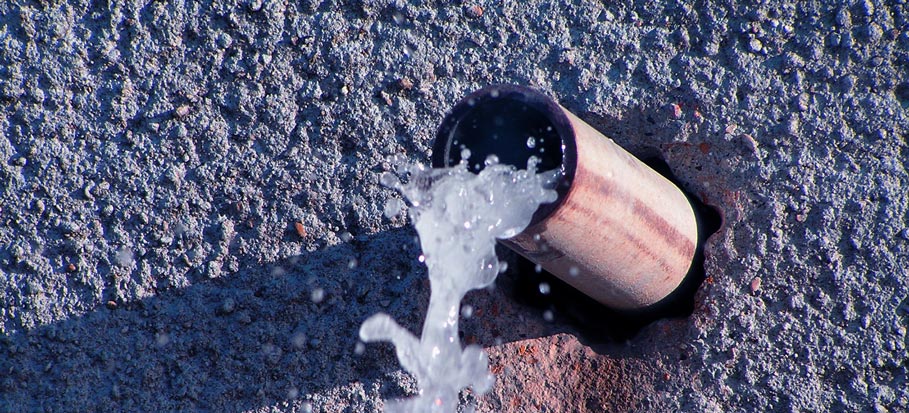Just how to Check If Your Home Has a Concealed Leakage
Just how to Check If Your Home Has a Concealed Leakage
Blog Article
This great article listed below pertaining to Leaking water lines is absolutely stimulating. Check it out yourself and figure out what you think about it.

Early discovery of leaking water lines can alleviate a possible catastrophe. Some small water leakages may not be noticeable.
1. Check Out the Water Meter
Every house has a water meter. Inspecting it is a guaranteed manner in which aids you find leaks. For beginners, switch off all the water resources. Make sure nobody will purge, make use of the faucet, shower, run the cleaning maker or dish washer. From there, go to the meter and also watch if it will certainly alter. Because nobody is utilizing it, there should be no motions. If it relocates, that suggests a fast-moving leak. Similarly, if you detect no changes, wait a hr or more as well as inspect back again. This means you might have a sluggish leak that can also be underground.
2. Check Water Consumption
Examine your water expenses as well as track your water consumption. As the one paying it, you must notice if there are any inconsistencies. If you spot sudden changes, despite your usage coinciding, it indicates that you have leaks in your plumbing system. Bear in mind, your water costs should drop under the same range every month. An abrupt spike in your bill indicates a fast-moving leakage.
Meanwhile, a constant rise monthly, even with the very same practices, shows you have a slow-moving leak that's likewise gradually rising. Call a plumber to completely inspect your residential property, specifically if you really feel a warm location on your flooring with piping underneath.
3. Do a Food Coloring Examination
When it comes to water intake, 30% comes from toilets. If the color somehow infiltrates your dish throughout that time without flushing, there's a leakage between the storage tank as well as bowl.
4. Asses Outside Lines
Don't neglect to inspect your exterior water lines also. Ought to water seep out of the connection, you have a loosened rubber gasket. One tiny leakage can waste tons of water as well as spike your water expense.
5. Evaluate as well as Analyze the Circumstance
Home owners ought to make it a behavior to examine under the sink counters as well as also inside cupboards for any kind of bad odor or mold growth. These 2 red flags show a leak so punctual focus is needed. Doing regular examinations, also bi-annually, can save you from a major problem.
If you recognize your residence is currently old, maintain a careful eye on your heaters, pipes, pipelines etc. Check for stainings as well as damaging as the majority of home appliances as well as pipes have a life span. They will additionally naturally deteriorate as a result of wear and tear. Do not wait for it to intensify if you presume dripping water lines in your plumbing system. Call an expert plumber right away so you do not end up with an awful mess in your home.
Early detection of dripping water lines can minimize a potential catastrophe. Some tiny water leaks may not be noticeable. Examining it is a surefire way that helps you uncover leakages. One little leak can squander tons of water and spike your water expense.
If you suspect leaking water lines in your plumbing system, do not wait for it to escalate.
WARNING SIGNS OF WATER LEAKAGE BEHIND THE WALL
PERSISTENT MUSTY ODORS
As water slowly drips from a leaky pipe inside the wall, flooring and sheetrock stay damp and develop an odor similar to wet cardboard. It generates a musty smell that can help you find hidden leaks.
MOLD IN UNUSUAL AREAS
Mold usually grows in wet areas like kitchens, baths and laundry rooms. If you spot the stuff on walls or baseboards in other rooms of the house, it’s a good indicator of undetected water leaks.
STAINS THAT GROW
When mold thrives around a leaky pipe, it sometimes takes hold on the inside surface of the affected wall. A growing stain on otherwise clean sheetrock is often your sign of a hidden plumbing problem.
PEELING OR BUBBLING WALLPAPER / PAINT
This clue is easy to miss in rooms that don’t get much use. When you see wallpaper separating along seams or paint bubbling or flaking off the wall, blame sheetrock that stays wet because of an undetected leak.
BUCKLED CEILINGS AND STAINED FLOORS
If ceilings or floors in bathrooms, kitchens or laundry areas develop structural problems, don’t rule out constant damp inside the walls. Wet sheetrock can affect adjacent framing, flooring and ceilings.
https://www.servicemasterbyzaba.com/blog/how-to-detect-water-leakage-in-walls/

I discovered that entry on Hacks to detect leaks when doing a lookup on the web. Please take the opportunity to promote this entry if you liked it. We cherish reading our article about Hacks to detect leaks.
Report this page